ShopZoneAI is an AI-powered e-commerce platform designed to simplify the process of finding and purchasing laptops. Using LangChain’s intelligent search capabilities, the platform allows users to express their preferences and receive smart, personalized product recommendations. The goal of ShopZoneAI is to make the laptop shopping journey faster, more accurate, and more enjoyable by offering tailored suggestions that meet each customer’s unique needs, all within a secure and user-friendly environment.
🤔 Problem space
Problems to solve/Requirements to Create
As potential clients in the laptop e-commerce space, users often struggle with finding the right laptop that matches their specific needs without spending hours comparing specifications and browsing endless product listings. They need a smarter, more intuitive way to discover laptops tailored to their preferences.
👉 Problem: Users struggle to find laptops based on personalized needs
Problem statement
Traditional e-commerce platforms require users to manually filter products by technical specifications. However, not all users know exactly what specs they need — they think in terms like “I need a laptop for graphic design” or “I need something lightweight with good battery life.” This disconnect creates frustration and leads to decision fatigue.
Current solution
Currently, users apply multiple filters and read through product descriptions or external reviews to make a choice. The process is time-consuming and often confusing for non-technical users.
How do we know it is a problem
User feedback: Users report difficulty in understanding which laptop suits their needs best, feeling overwhelmed by the number of options.
Metrics: Increased abandonment rates after users interact with filters or preferences.
Evidence: Performance logs show slow response times when AI is fetching recommendations.
👉 Problem: Slow and overwhelming shopping experience
Problem statement
Customers often feel overwhelmed by too many product options and unclear comparisons, leading to frustration. The lack of smart recommendations and interactive guidance causes delays in finding the right product.
Current solution
Most platforms offer sorting and filtering tools, but they lack intelligent assistance. Users must rely on manual comparison and guesswork.
How do we know it is a problem
User feedback: Users report confusion and frustration with manual comparisons.
Metrics: Increased bounce rates after product browsing steps.
Evidence: Analytics show drop-offs after product selection, indicating dissatisfaction.
Why solve these problems?
Addressing these problems is crucial for enhancing the overall user experience and increasing conversion rates. By making it easier for customers to find their ideal laptop through smart recommendations and clear, personalized guidance, we can build user trust and improve satisfaction.
Reason 1: Users are overwhelmed by too many options and unclear guidance, which negatively impacts their decision-making process. Addressing this improves ease of use and increases the likelihood of conversion.
Reason 2: Slow product searches and unclear results lead to frustration and abandonment. Solving this will lead to higher engagement and retention.
User Satisfaction Matrix
Current State: Users experience slow load times, overwhelmed by too many product options, and unclear guidance, leading to frustration and decision fatigue.
Desired State: After solving these problems, users will enjoy fast and personalized laptop recommendations, clear product selections, and a smoother, more efficient shopping experience.
Goals
Company objective 🎯
💡 To create a smart, user-friendly online shopping platform that offers personalized laptop recommendations, optimizing the shopping journey and making product discovery efficient and enjoyable for users.
Project goals
Project goal: Implement an AI-powered recommendation system to deliver personalized laptop suggestions based on user preferences, helping users quickly find the best option.
Project goal: Build a clean and intuitive UI using modern design principles (like ShadCN UI) to streamline the shopping experience, making it easier to find and choose the right product.
Project goal: Optimize load times and performance by enhancing AI processing speed, reducing delays in delivering product recommendations.
Project goal: Improve the filtering and sorting features to provide more accurate and relevant results based on customer preferences, making it easier to narrow down choices.
User Stories
User type: Shopper
The Shopper is browsing the ShopZoneAI website to find the ideal laptop based on their preferences, such as performance, battery life, and price range.
Goals: Find a laptop that suits their specific needs based on personalized recommendations.
Needs: Smart product recommendations, easy-to-use filters, and a smooth, intuitive shopping experience.
Other characteristic: Prefers quick, accurate results and a seamless, intuitive shopping experience.
User type: Admin
The Admin manages the ShopZoneAI platform, ensuring the product catalog is up-to-date, managing user preferences, and analyzing sales data.
Goals: Manage product listings, ensure accurate data on products, and monitor sales trends to optimize inventory.
Needs: A simple, intuitive admin dashboard to update product details, track user activity, and monitor system performance.
Other characteristic: Needs easy-to-use tools to manage products.
🌟 Design space
UI Design
The UI design for ShopZoneAI is built to provide a seamless and efficient shopping experience, focusing on ease of navigation and intelligent product discovery. Key features include:
User Flow:
Sign up or log in to access personalized laptop recommendations.
Input preferences for laptops, such as performance, battery life, price range, etc.
Browse AI-powered recommendations and find the perfect laptop based on personalized suggestions.
Admin Flow:
Login → Access the admin dashboard.
View and manage product listings and user activity.
Update product details or add new laptops to the catalog.
Low-fidelity Wireframe
Design Concept
The core design concept for ShopZoneAI is centered on simplicity, ease of use, and effective product discovery. The platform aims to deliver a smooth, efficient, and personalized shopping experience for users, while offering an easy-to-manage backend for admins.
For users:
The user flow starts with a clean and modern homepage, showcasing personalized laptop recommendations based on input preferences. The shopping experience is designed to be fast, intuitive, and user-friendly with quick access to filters, and checkout.
For admins:
The admin dashboard provides a simple interface for managing laptop listings, viewing user interactions, and tracking sales performance. It focuses on offering the necessary tools to manage products and monitor activity efficiently.
Wireframes
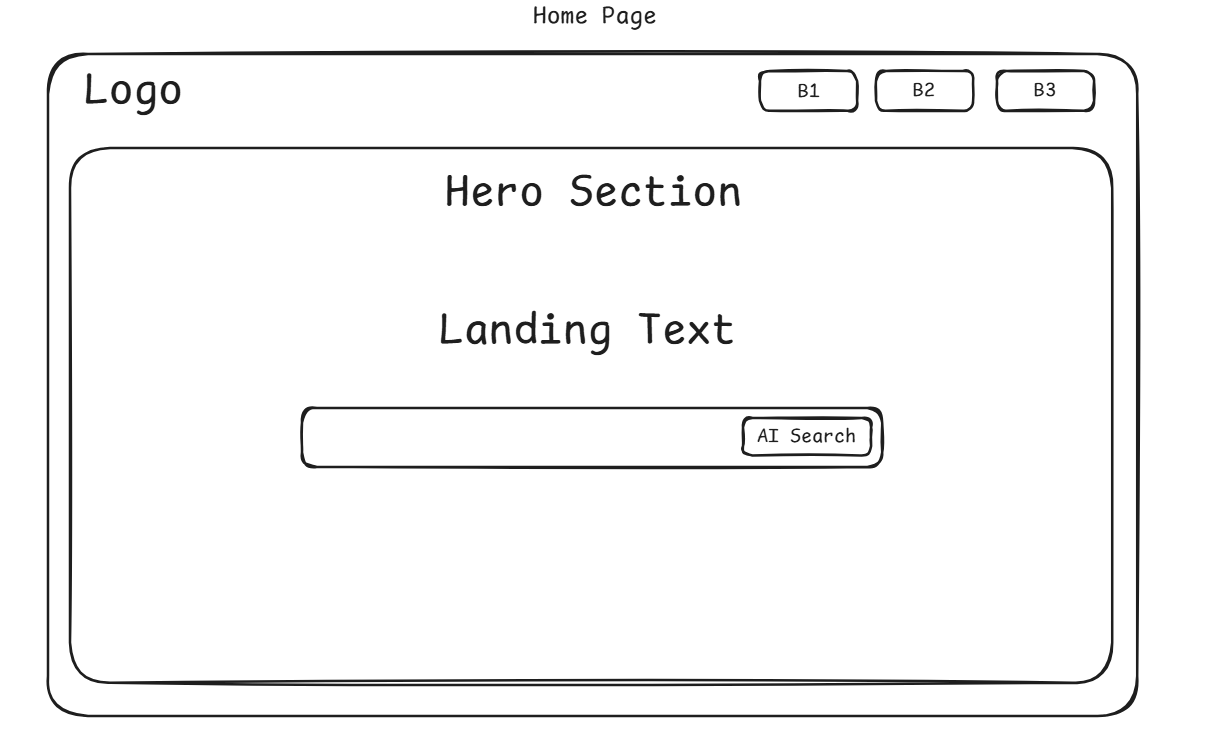
✍️ Home Page Wireframe
Top section: Logo, navigation buttons (Sign in, Sign up)
Large hero banner describing platform features with AI Search Form
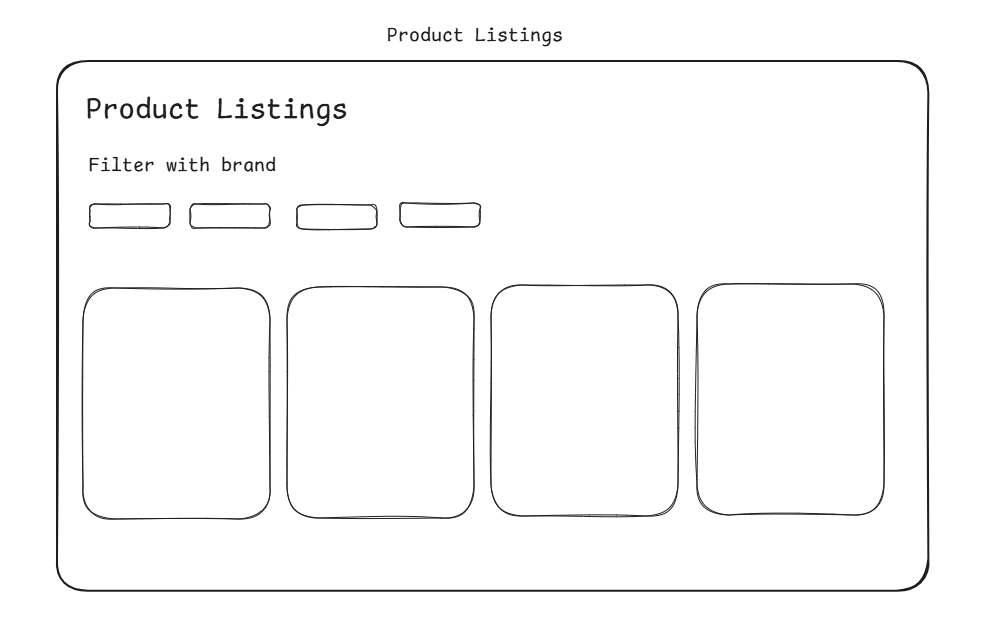
✍️ Product Listings Component Wireframe
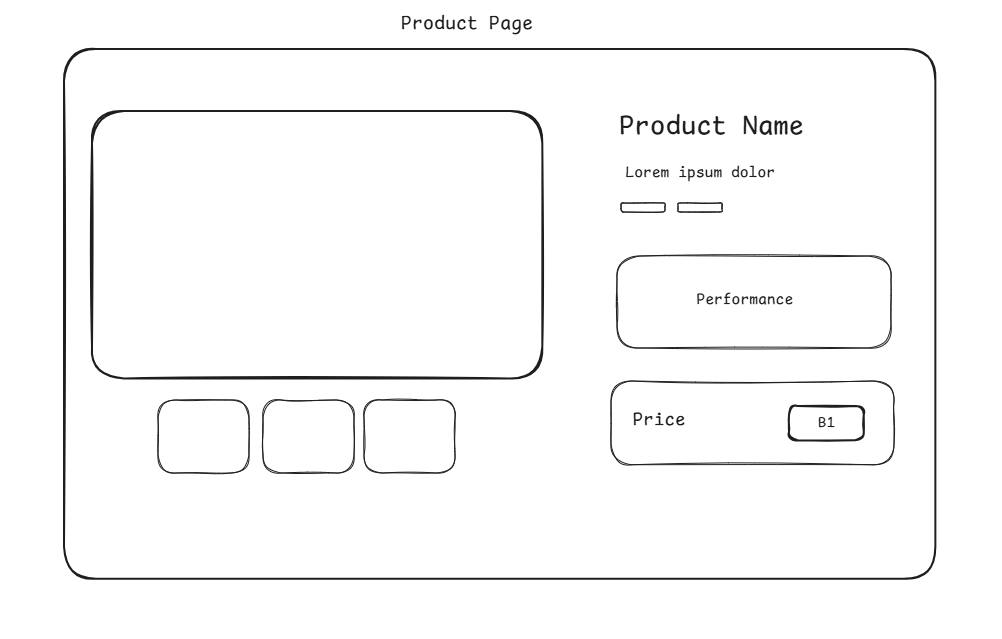
✍️ Product Page Wireframe
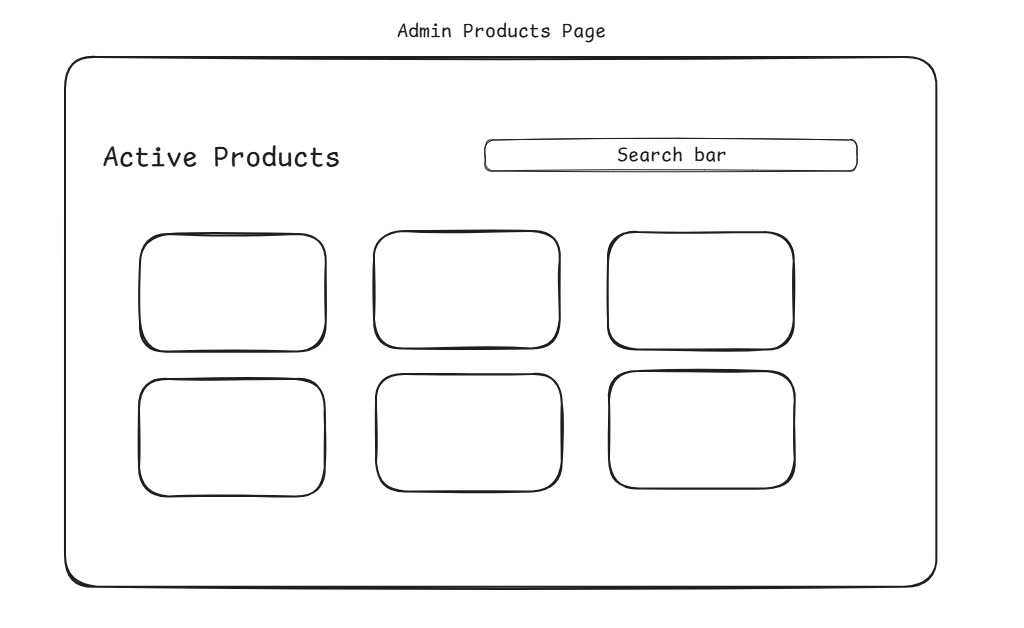
✍️ Admin Products Page Wireframe
Design System 🎨
For ShopZoneAI, we utilized ShadCN UI to maintain consistency and ensure a seamless user experience across all pages and interactions. Here's why the design system was necessary and how we utilized it in the project:
Why We Needed a Design System
Consistency: By using ShadCN UI, we ensured consistent design elements across the platform, including buttons, form fields, cards, and other components. This consistency contributes to a cohesive and professional look, which is essential for user trust and navigation ease.
Efficiency: Instead of building components from scratch, ShadCN UI allowed us to leverage pre-built, customizable components that align with modern design standards. This streamlined the development process and saved time.
Scalability: As the project expands, ShadCN UI provides the flexibility to scale. New components can be added, and customizations can be applied without disrupting the overall design.
User-Centered Design: The system ensures that each UI element is designed with usability in mind, optimizing for mobile responsiveness, accessibility, and user engagement.
How We Utilized ShadCN UI
Component Library: We made use of ShadCN UI’s pre-designed components, such as buttons, modals, and navigation bars, to create a clean and uniform interface. These components were customized to fit the brand's visual identity and ensure a seamless user experience.
Layouts and Grid System: We used ShadCN UI's grid and layout components to structure product listings, filtering options, and the user dashboard. This helped in maintaining alignment, responsiveness, and overall layout flexibility.
Interactive Elements: For interactive elements like product cards and filters, ShadCN UI provided simple, yet elegant components with built-in animations and transitions that improved the user's engagement without compromising performance.
Customization: While ShadCN UI offers an extensive library, we customized key components like color schemes, typography, and spacing to match ShopZoneAI’s branding, ensuring that it delivers a unique, yet consistent, experience across the site.
Development Phase
Technology Stack Selection
1. Frontend - React.js with RTK Query
Why React.js?
Component-Based Architecture: React allows the development of reusable and modular components, making it easy to maintain and scale the platform as new features are added.
Virtual DOM for Efficient UI Updates: React’s use of a virtual DOM helps in reducing the number of costly DOM manipulations, resulting in faster rendering and smoother user interactions.
Strong Ecosystem: With a large and active community, React provides a wealth of libraries, tools, and tutorials, allowing for quick problem-solving and continuous improvements.
React Hooks for Managing State: React hooks like useState, useEffect, and useContext offer a clean and efficient way to manage component states and side effects, improving maintainability.
Why RTK Query for Data Fetching?
Optimized for Redux: RTK Query is a powerful data fetching tool integrated with Redux, which simplifies state management while providing efficient data handling.
Automatic Caching and Synchronization: RTK Query ensures that data fetched from the server is cached, preventing unnecessary network requests and improving app performance. It also keeps data up-to-date with automatic synchronization.
Error Handling and Retry Logic: Built-in error handling and automatic retry logic help ensure the app remains functional even during network failures.
Optimized for Performance: RTK Query’s batching, caching, and background fetching features improve performance and reduce unnecessary re-renders, leading to a smoother user experience.
2. Backend - Node.js with Express.js
Why Node.js?
JavaScript Everywhere: With Node.js, we can use JavaScript on both the frontend and backend, creating a more unified development experience.
Non-blocking, Event-Driven Architecture: Node.js is designed to handle concurrent requests with ease, which is ideal for handling multiple users searching for laptops and making recommendations at once.
High Performance: Node.js is known for its high performance in I/O-bound tasks, making it perfect for the real-time aspects of ShopZoneAI, such as fetching laptop recommendations and filtering search results.
Why Express.js?
Lightweight and Flexible: Express.js is a minimalistic framework for Node.js, providing the essential tools for building robust REST APIs while allowing flexibility for customization.
Easy Routing and Middleware: Express simplifies routing and middleware usage, which is crucial for handling user requests, fetching product data, and processing searches efficiently.
Rapid Development: Express allows for quick API development with clean and easy-to-read code, making the development process faster.
3. Database - MongoDB
Why MongoDB?
Flexible Schema: MongoDB is a NoSQL database, which makes it well-suited for storing user preferences, laptop listings, and other unstructured data. This flexibility allows us to make changes to the schema without significant disruptions.
Scalability: MongoDB's distributed nature enables it to scale horizontally, which is crucial as the platform grows and more product data, users, and recommendations are added.
Fast Querying: MongoDB's ability to handle large volumes of data and provide fast queries helps in fetching product recommendations and filtering results efficiently.
4. AI - OpenAI’s GPT-4o
Why OpenAI GPT-4o?
Personalized Recommendations: GPT-4o helps provide AI-driven, personalized laptop recommendations based on user input, improving the user experience by offering products tailored to their preferences.
Natural Language Understanding: OpenAI's model can process and understand user queries in natural language, making it easier for users to describe their preferences and receive accurate product suggestions.
Scalability: GPT-4o can scale effortlessly, making it ideal for integrating AI functionalities in ShopZoneAI, which needs to handle a large number of simultaneous requests.
5. Authentication - Clerk
Why Clerk?
Easy Integration: Clerk integrates seamlessly with React apps, providing quick setup for authentication workflows.
Secure Authentication: Clerk supports multi-factor authentication, ensuring secure sign-ups, log-ins, and account management.
Customization and User Management: Clerk’s powerful tools for user management help handle user data, roles, and permissions with minimal configuration.
High-Level Architecture Diagram
The architecture of ShopZoneAI is built around a Client-Server Model with distinct separation of concerns between the frontend, backend, and AI integration.
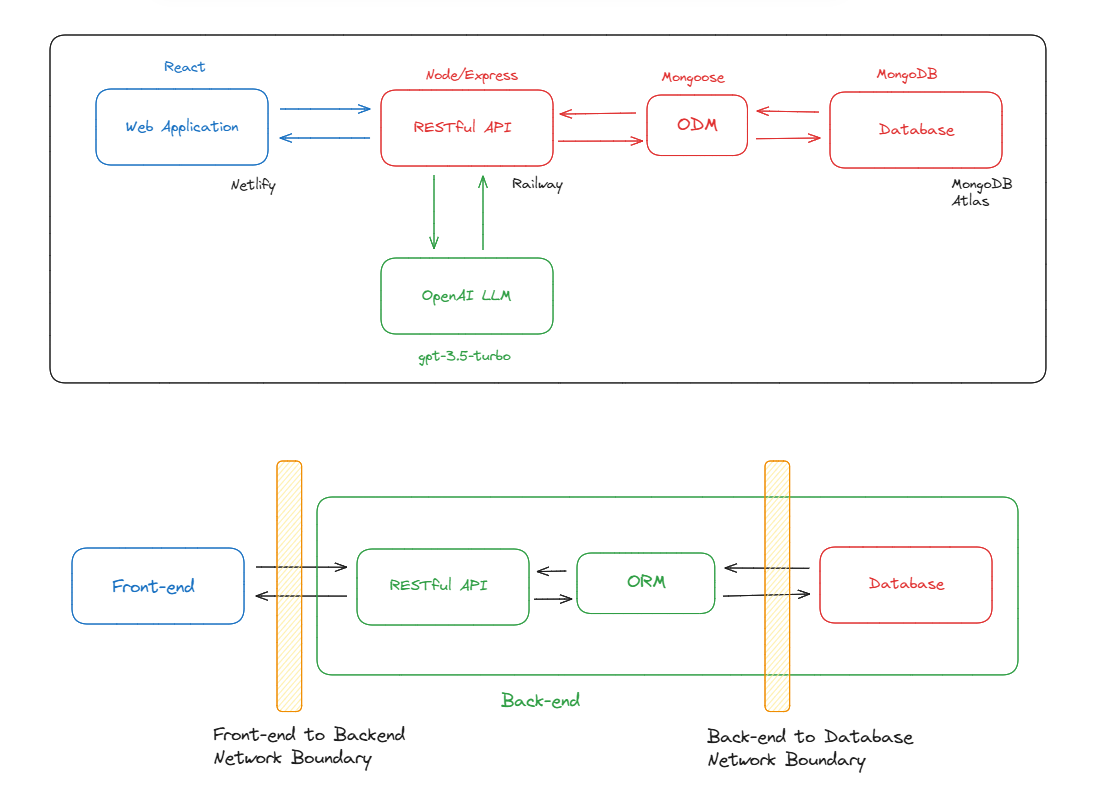
Basic Entity-Extended Relationship Diagram
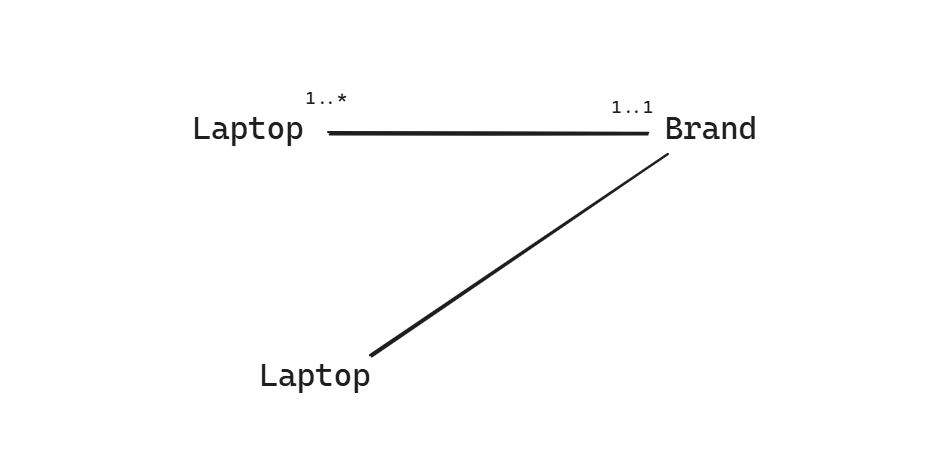
Key Features of the Software
1. AI-Powered Laptop Recommendations
Decision: Implemented OpenAI's GPT-4o for personalized laptop recommendations based on user preferences (e.g., performance, battery life, price range).
Implementation:
Integrated GPT-4o API to analyze user inputs and provide tailored product suggestions.
Used natural language processing to understand and interpret user preferences in their own words, ensuring accurate results.
Created a seamless user experience where users receive laptop suggestions as soon as they complete the preference questionnaire.
2. User Preferences & Filtering System
3. Admin Dashboard
4. User Authentication & Profile Management
5. Mobile-Responsive Design
6. AI-Based Performance Optimization
Challenges Faced and Solutions
Problem 1:
Slow Recommendation Processing
Challenge:
The AI-powered recommendation system was taking too long to process user preferences and return relevant laptop recommendations. This caused delays in user interactions, leading to a poor user experience, especially when dealing with multiple filters and preferences.
Solution 1:
To solve this, I implemented AI model optimization and caching techniques:
AI Model Optimization: Reduced model complexity without compromising accuracy. By fine-tuning the recommendation algorithm, I minimized unnecessary computations and ensured faster responses.
Caching with Redis: Frequently accessed recommendations were cached in Redis, allowing for quick retrieval and reducing the load on the AI model, improving response times for repeat queries.
Problem 2:
Complex Data Management for Recommendations and Filters
Challenge:
Handling large amounts of product data, along with real-time updates to product availability, posed challenges in keeping the UI in sync with the backend without causing performance issues.
Solution 2:
I used RTK Query with Redux for efficient data management:
Optimized Data Fetching: RTK Query's built-in caching and synchronization features ensured that only necessary data was fetched, reducing redundant API calls.
State Management with Redux: Leveraged Redux Toolkit for managing global states like user preferences and filter selections. This allowed me to track filter changes across multiple components and keep the UI synchronized with the data without unnecessary re-renders.
Long-Term Vision (V.2 and beyond):
AI-Powered Visual Search:
Introduce an AI-powered visual search feature that allows users to upload images of laptops they like or are considering. The platform will then recommend similar laptops based on visual similarities and specifications.
Personalized AI Assistant:
Develop a smart AI assistant that can guide users through the shopping process. This assistant will offer suggestions based on user preferences, historical behavior, and even external factors like news or promotions.
User Reviews & Sentiment Analysis:
Integrate AI-driven sentiment analysis to analyze user reviews and ratings, offering potential buyers a more insightful understanding of product quality and performance. This will enhance the decision-making process by displaying summarized insights based on reviews.
Mobile-First Approach (V.3):
Ensure the platform is fully optimized for mobile devices, offering a smooth and responsive experience for users shopping on the go. Mobile-specific features like voice search and gestures will be incorporated.
Integrate AR for Product Visualization:
Allow users to visualize the laptops in their real-world environments through Augmented Reality (AR). This could be especially useful for users looking to compare size and appearance before making a purchase decision.
Planned Activities for V.2, V.3, and Beyond:
Version 2 (V.2):
Enhanced AI Recommendation System:
Advanced Filtering & Sorting System:
Allow users to filter by user ratings, brand loyalty, or new releases, along with existing features like performance and battery life.
Save Filter Presets: Users will be able to save filter combinations and access them easily in the future.
Interactive Comparison Tool:
Although there is no current comparison tool, the next step would be to develop a smart comparison feature where users can select laptops and see side-by-side specifications, ratings, and detailed feature breakdowns.
Improved User Interface for Admin Panel:
Enhance the admin dashboard with more advanced analytics, enabling admins to monitor trends, sales, and customer behaviors. This will empower them to make data-driven decisions.
Version 3 (V.3):
Subscription & Loyalty Programs:
Real-Time Inventory Updates:
Voice-Activated Search:
Global Expansion & Multi-Language Support:
Expand the platform’s reach to international users by adding support for multiple languages, currencies, and shipping options, ensuring a global user base.
User Interface Enhancements:



Get visibility from recruiters & peers
Build your portfolio & personal brand
Connect with like-minded developers
